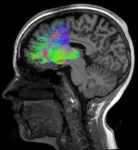(Press-News.org) The more a plant species invests in defense, the less potential it has for growth, according to a new study. Research made possible by open science provides new insights into plant adaptation and interspecies variation.
Pathogens can significantly weaken the fitness of their hosts, sometimes even causing host mortality. Yet considerable variation is found between species in their investment in disease defense. Evolutionary theory predicts that allocation costs regulate this investment, but testing this hypothesis has been challenging.
In a study published in Science, postdoctoral researcher Michael Giolai and Professor of Plant Biodiversity Anna-Liisa Laine from the University of Helsinki used open databases to identify plant defense genes and growth traits in 184 plant species. They found striking variation among plant species in the number of defense genes, which ranged from 44 to 2,256. Examples include asparagus, which has only 72 resistance genes, while one chili variety has as many as 1,095. Laine and Giolai also discovered a negative correlation between defense investment and growth traits in wild plants: the higher that the proportion of a plants’ genome is dedicated to defense genes, the lower growth potential it has.
“Our study demonstrates the significant role of allocation costs in the generation and maintenance of biodiversity. The findings also shed light on mechanisms that limit the evolution of defense,” explains Michael Giolai.
Allocation costs refer to the trade-off in distributing resources among different life functions. For plants, this means that if a plant uses many resources (like energy and nutrients) to maintain its defenses, this may detract from other functions such as growth. In other words, the plant must balance its resource use, which can lead to a scenario where a strong defense reduces growth potential, or vice versa.
The study also examined cultivated plants that have been bred for specific traits. In these plants, a negative correlation between growth and defense was not observed due to the breeding that reduced natural variation in the genomes of crop plants.
Giolai and Laine’s research is an excellent example of the potential of open science. Sequencing the genomes of hundreds of plant species and collecting data on growth traits would be impossible for a single research team. The increase in open data enables new types of research that help us understand interspecies variation in different traits.
“If we want to understand the mechanisms that maintain interspecies trait variation, a multi-species approach like this is essential. The increasing availability of open data enables entirely new levels of investigation into these questions,” states Anna-Liisa Laine.
END
Defense or growth – How plants allocate resources
2024-11-07
ELSE PRESS RELEASES FROM THIS DATE:
Study identifies hip implant materials with the lowest risk of needing revision
2024-11-07
Hip implants with a delta ceramic or oxidised zirconium head and highly crosslinked polyethylene liner or cup had the lowest risk of revision during the 15 years after surgery, a new study led by the University of Bristol has found. The research could help hospitals, surgeons and patients to choose what hip implant to use for replacement surgery.
The aim of the study was to establish hip implant materials at risk of revision to help orthopaedic surgeons, and patients, and to improve shared decision making ...
Study reveals how plants grow thicker, not just taller
2024-11-07
Most research on plant stem cells focuses on the tips of roots and shoots, where growth occurs in height. But Ten Tusscher explains that thickness growth is just as essential. “Plants can’t grow endlessly in height. They also need to grow in thickness, or they would simply fall over,” she says. The growth in thickness, is what makes older trees visibly thicker and more robust over time. This growth is essential for structural strength, particularly in trees.
Stem cells in the plant’s cambium layer control this width growth, producing wood to support the plant’s structure. However, which genes enable these cambium stem cells to become active ...
Insect-killing fungi find unexpected harmony in war
2024-11-07
University of Maryland entomologists uncovered a unique relationship between two species of fungi known for their ability to invade, parasitize and kill insects efficiently. Instead of violently competing for the spoils of war, the two fungi peacefully cooperate and share their victims.
The findings, published in the journal Public Library of Science (PLOS) Pathogens on November 7, 2024, offer insight into some of the biggest evolutionary successes in nature’s history, according to study co-authors Raymond St. Leger, a Distinguished University Professor of Entomology, and entomology Ph.D. candidate Huiyu Sheng.
“It’s not survival ...
Unlocking predictors of success in treating inflammatory bowel disease (IBD)
2024-11-07
Not everyone responds equally well to treatments for inflammatory bowel disease (IBD). What will work for individual patients involves trial and error during the treatment process. Now, a team of researchers led by Charité – Universitätsmedizin, in collaboration with colleagues in Berlin and Bonn, has succeeded in identifying a biomarker that indicates whether or not treatment with a certain medication called an immunomodulator will be successful. Writing in the journal Gastroenterology,* the researchers note that this will permit more targeted use of the therapy.
Inflammatory bowel disease (IBD) takes multiple ...
New PFAS removal process aims to stamp out pollution ahead of semiconductor industry growth
2024-11-07
CHAMPAIGN, Ill. — A University of Illinois Urbana-Champaign study is the first to describe an electrochemical strategy to capture, concentrate and destroy mixtures of diverse chemicals known as PFAS — including the increasingly prevalent ultra-short-chain PFAS — from water in a single process. This new development is poised to address the growing industrial problem of contamination with per- and polyfluoroalkyl substances, particularly in semiconductor manufacturing.
A previous U. of I. study showed that short- and long-chain PFAS can be removed from water using electrochemically driven adsorption, referred to as ...
Researchers identify reduction in heart failure-related risk factors following metabolic surgery
2024-11-07
Researchers Identify Reduction in Heart Failure-Related Risk Factors following Metabolic Surgery
Recent study suggests that metabolic surgery for patients with heart failure can reduce dependency on oral diuretics, which are used to manage heart failure symptoms
FOR IMMEDIATE RELEASE
November 7, 2024
BATON ROUGE – Pennington Biomedical Research Center researchers at the Metamor Institute, along with colleagues from Our Lady of the Lake and LSU Health-New Orleans, have recently determined that metabolic surgery on patients with heart failure can result in a reduction in the need for oral diuretics, which are used to manage symptoms such as venous and ...
The Kenneth H. Cooper Institute at Texas Tech University Health Sciences Center unveiled in Dallas
2024-11-07
For more than 50 years, as a leading pioneer of preventive medicine and the “father of aerobics,” Kenneth H. Cooper, M.D., has revolutionized health and fitness worldwide. Similarly, the Texas Tech University Health Sciences Center (TTUHSC) has long been dedicated to education, patient care and research. Today (Nov. 4) TTUHSC officially welcomed The Cooper Institute as part of its organization with a special presentation and unveiling of its new name – the Kenneth H. Cooper Institute at Texas Tech University Health Sciences Center.
The Cooper ...
DNA evidence rewrites story of people buried in Pompeii eruption
2024-11-07
In 79 AD, Mount Vesuvius experienced one of its most significant eruptions, burying the Roman city of Pompeii and its inhabitants under a thick layer of small stones and ash known as lapilli. Many of Pompeii's inhabitants lost their lives as their homes collapsed under the weight of the lapilli raining down from many kilometres above. Those who survived the initial phase of the eruption eventually succumbed to the dangerous pyroclastic flows. This fast-moving stream of hot gas and volcanic matter instantly enveloped their bodies in a solid layer of ash, effectively preserving their bodies, including their features.
Since the 1800s, casts had been made by pouring plaster into the ...
DNA evidence rewrites histories for people buried in volcanic eruption in ancient Pompeii
2024-11-07
In 79 CE, the active volcanic system in southern Italy known as Somma-Vesuvius erupted, burying the small Roman town of Pompeii and everyone in it. The “Pompeii eruption” covered everything in a layer of ash that preserved many of the bodies. Now, ancient DNA collected from the famed body casts alters the history that’s been written since the once forgotten town’s rediscovery in the 1700s. As reported on November 7, 2024, in Current Biology, the DNA evidence shows that individuals’ sexes and family relationships don’t match ...
People with schizophrenia show distinct brain activity when faced with conflicting information
2024-11-07
Scientists have known for decades that the classic symptoms of schizophrenia, such as jumping to conclusions or difficulty adjusting to new information, can be attributed to poor communication between the cerebral cortex and the thalamus, known as the brain’s central switchboard. By measuring brain cell activity between these two regions as volunteers completed ambiguous tasks, a team of Tufts University School of Medicine and Vanderbilt University School of Medicine researchers found a way to use someone’s sensitivity to uncertainty as a diagnostic tool.
In a study published November 7 in the journal ...







